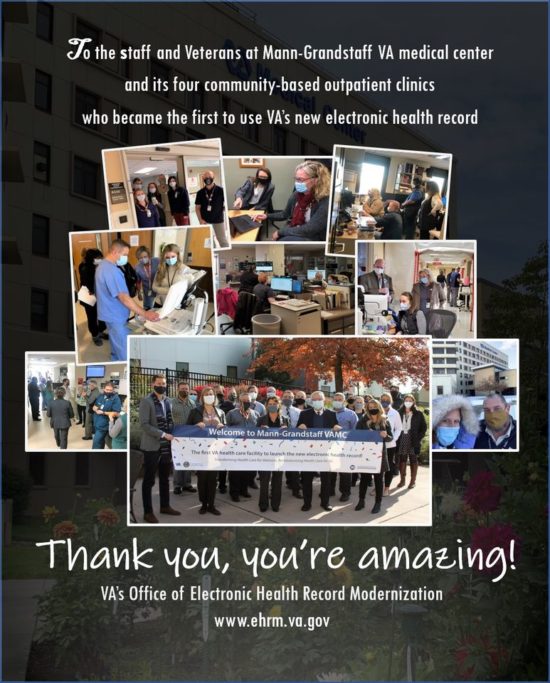WASHINGTON — The VA should consider pausing the rollout of its new electronic health record system until problems discovered during earlier deployment stages are addressed, according to a report from the Government Accountability Office.
In October 2020, just prior to the system’s launch at the first site in Spokane, WA, the government watchdog agency told congressional staff members that, while VA had made significant progress in deploying the new system, system tests had led to 17 “critical” test findings and 361 “high severity” findings.
“As a result, VA was at risk of deploying a system that did not perform as intended and could negatively impact the likelihood of its successful adoption by users if these test findings were not resolved prior to initial deployment,” GAO stated in a report released last month.
GAO recommended that VA delay deployment until the critical test findings were closed and the high severity ones either closed or circumvented by workarounds.
VA chose not to delay and went ahead with the deployment at the Mann-Grandstaff VAMC as scheduled on Oct. 24. By the time it went live, the department had fixed all of the critical findings and fixed or found workarounds for most of the high severity ones.
This scenario—the identification of serious issues between launch stages—will likely happen again, according to the GAO. VA is planning its next system deployment for the fourth quarter of 2021 at the Puget Sound Healthcare System in Seattle.
Examples of some critical and high severity test findings that were identified and subsequently dealt with are: the inability to check a patient in for surgery; inconsistencies in translating messages between different systems; and the inability of AudioCARE, the VA’s automatic communications system, to store data, such as when veterans leave their name and Social Security number while refilling prescriptions.
The GAO is recommending that VA postpone deployment of the new EHR in new locations until all existing open critical and high severity findings are resolved and closed. According to the watchdog agency, the system still has 55 open high severity test findings, as well as any new ones that have been identified since the Spokane launch.
“If VA does not close or appropriately address all critical and high severity test findings prior to deploying at future locations, the system may not perform as needed,” the report declares.
The VA’s written response to the GAO report stated that the Office of Electronic Health Record Modernization (OEHRM) “concurs-in-principle” with the findings but did not go so far as to agree that a pause in the rollout was necessary. VA officials said they remain confident that they can fix any open issues prior to deployment as they had done in Spokane.
‘Every Precaution’
“OEHRM is taking every precaution to deliver an effective system for our clinicians and users and remain committed to getting this right for our veterans,” said Dat Tran, then-acting VA secretary. “When VA went live at the Mann-Grandstaff VAMC and [associated clinics], the OEHRM resolved and closed all critical severity test findings. In building upon [those] deployment successes … VA will continue to appropriately adjudicate all critical severity test findings prior to future go-live implementation. In the meantime, VA will continue to launch the EHR as planned.”
VA has stated that it plans to resolve and close all critical severity and high severity test findings by January 2022.
Tran and OEHRM even found issue with the title of the GAO’s report—Electronic Health Records: VA Has Made Progress in Preparing for New System, but Subsequent Test Findings Will Need to Be Addressed. VA recommended a more-proactive voice and suggested that the title should be edited to read “… Test Findings Are Being Addressed.”
While VA’s struggle with updating its EHR stretches back years, if not decades, this most recent effort began in 2018. That was when VA announced its plan for initial deployment of the new CERNER-built EHR system in March 2020 in Spokane and April 2020 in Seattle. What followed were a number of postponements and reshuffling, some due to the pandemic, some due to design issues. The rollout was originally estimated to cost $10 billion over 10 years—a figure that VA has previously testified has not changed. The project is still estimated to be completed in 2028.


